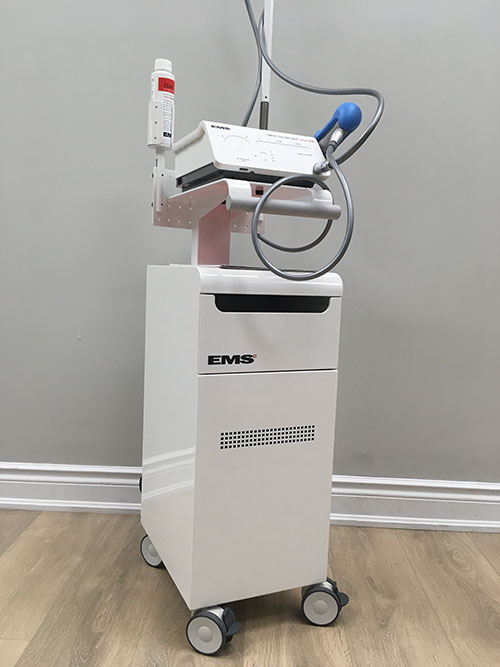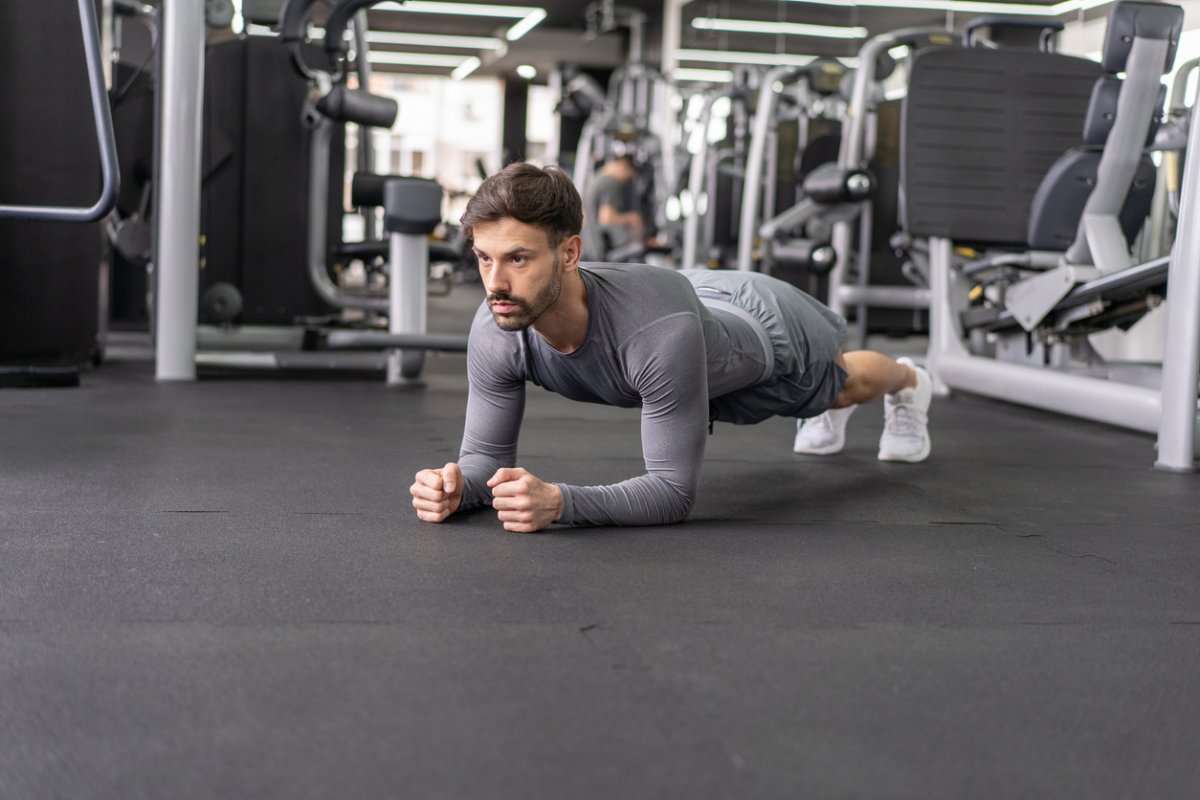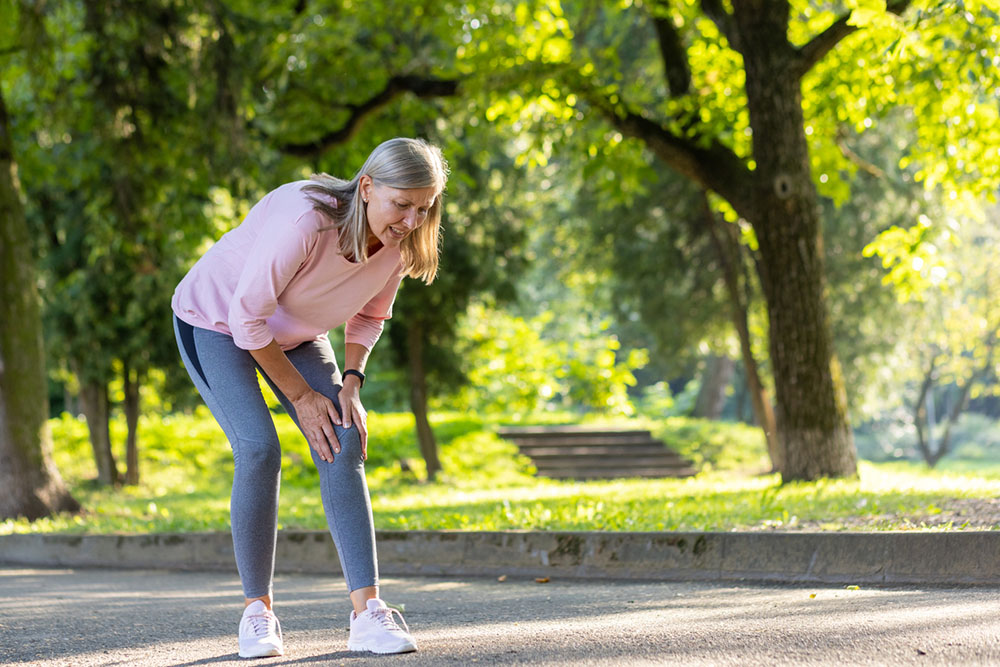
Shockwave Therapy
Extracorporeal Shockwave Therapy (often referred to as “Shockwave Therapy”) is a newer treatment approach for various musculoskeletal disorders.
A large number of studies, including systematic reviews and randomized controlled trials have been published in reputable peer reviewed scientific journals supporting the efficacy of this treatment approach. For this reason, shockwave therapy has become very popular. The literature is most supportive of its use in treating tendon disorders such as tennis elbow, Achilles tendinitis (tendinopathy / tendinosis), certain rotator cuff injuries and plantar fasciitis (fasciosis).
At Burlington Sports Therapy, we offer Shockwave Therapy using the Swiss Dolorclast device. It has been used in the majority of independent scientific studies, so our clinic is able to review the best literature and accurately match the methodology used in successful clinical trials. To perform the treatment, the practitioner places the treatment head on the area of injury, and compressed air accelerates a projectile at high speed. This energy is converted into a shock wave delivered to the target tissue through the skin. The impulses are delivered at various frequencies and pressure, depending on the tolerance of the patient.

COMMON QUESTIONS
The other mechanism is biological, which is an alteration in the activity of the cells. This occurs through “mechanotransduction”; physical forces across the membrane of a cell leading to a host of changes in cellular activity.
Simply put, the shockwaves create both chemical and physical changes in the tissue being treated. You could say that the cells are mildly damaged in a very controlled manner so that we can eliminate the unwanted tissue (such as scar tissue) and stimulate a new process of cellular recovery.
- Reduced pain
- Reduced neurogenic inflammation
- Improved tendon function (gliding)
- Improved tendon structure (tendon remodelling)
- Improved blood circulation to tissue
- Muscle relaxation
- Destruction of calcifications within tendons
Yes, there are a few restrictions and recommendations to keep in mind after undergoing shockwave therapy to help ensure proper healing and to avoid any complications. While most people can resume normal activities relatively quickly, following these guidelines will support your recovery. It is recommended to avoid any high-impact activities, heavy lifting or strenuous exercise for 24 – 48 hours after the session. This gives your body time to adjust and recover.
Since shockwave therapy stimulates healing and reduces pain though natural mechanisms, it’s usually advised to avoid taking non-steroidal anti-inflammatory drugs like ibuprofen or aspirin immediately after treatment, unless your doctor specifically recommends them. You want your body to respond to the therapy without any interference.
Try not to overuse or stress the area that was treated for a day or two if possible. Give the area some rest to allow for optimal healing. If a practitioner at Burlington Sports Therapy recommends stretching or mobility exercises, do so gently. Don’t push yourself to extremes after after the session, as your muscles and tissues may be more sensitive. Mild bruising, redness or soreness at the treatment site are common and should subside within a few days.
If you experience severe pain, swelling, or any unusual symptoms, contact your healthcare provider. Drinking plenty of water after treatment helps flush out any metabolic waste products released during the therapy and support recovery. If you’re unsure about any specific restrictions based on your medical history or the area treated, always check with your healthcare provider or the therapist performing the treatment.
Yes, shockwave therapy can often be combined with other treatments, and in many cases, it can enhance the overall effectiveness of a treatment plan. However, it’s important to tailor the combination of therapies to your specific condition and goals. Shockwave when combined with physiotherapy strengthens muscles and improves flexibility. Shockwave when combined with stretching and exercising can enhance your range of motion and reduce stiffness. Shockwave when combined with Massage therapy can relieve muscle tension and promote circulation. Shockwave when combined with cold or heat therapy can reduce swelling or relax muscles. Shockwave when combined with TENS can help with pain management and muscle recovery.
Shockwave therapy is a highly effective treatment for many conditions, but it may not be suitable for everyone. Conditions in which Shockwave therapy are suitable for include chronic pain, tendonitis, calcific tendonitis and muscle and joint pain. Conditions in which Shockwave is not suitable include, pregnancy, acute inflammation or injury, blood clotting disorders, cancer, infection, fractures, patient with cardiac issues and sensitive areas including areas where the reproductive organs are, eyes or over an open wound are not typically treated with Shockwave therapy. Always discuss your medical history with your practitioner at Burlington Sports Therapy.
The success rate of Shockwave therapy for chronic conditions can vary depending on the specific condition being treated, the severity of the injury, and individual factors. However, overall shockwave therapy has been shown to have a good success rate for many chronic conditions. Factors such as chronicity, severity of the condition, treatment area and individual variability.
Many patients report sustained improvement 6-12 months after a course of shockwave therapy, with some experiencing long-lasting relive from chronic pain and enhanced mobility. While the success rate varies, overall, shockwave therapy has shown positive effects for many chronic conditions, with a good percentage of patients experiencing reduced pain, improved function and faster healing times. It’s particularly useful for people who have not responded well to conservative treatment like rest, medications or physiotherapy.
To maximize the success of Shockwave therapy, it is often recommended as part of a comprehensive treatment plan, including physiotherapy, exercise or other modalities. Always consult with your health care provider to determine the best approach for your specific situation.
Shockwave therapy can be used for both acute and chronic conditions, but generally more commonly used for chronic conditions due to its effectiveness in stimulating healing in long-term injuries or pain, However, it can also help with acute injuries, depending on the specific circumstances. Shockwave Therapy is most commonly used for chronic musculoskeletal issues such as plantar fasciitis, tendonitis, calcific tendonitis, chronic myofascial pain and chronic joint or muscle pain. It helps promote blood flow, stimulate tissue healing, break down scar tissue and reduce pain by triggering the body’s natural healing process. It is especially effective for conditions that have not responded well to other treatments, like physical therapy or medications. Shockwave Therapy can be used for both chronic and acute injuries.
As always, its best to consult your Burlington Sports therapist to determine whether shockwave therapy is the right option for your specific condition whether acute or chronic.
If you are in the Burlington, Oakville, Hamilton and surrounding areas and are in need of Shockwave Therapy, contact Burlington Sports Therapy today.
The strongest evidence in support of shockwave appears to be in the management of various tendon disorders. Specifically, those conditions include but are not limited to plantar fasciitis (fasciosis), elbow tendinopathy (such as tennis elbow), achilles tendinopathy and rotator cuff tendinopathy / calcific tendinopathy. If you’re unsure as to whether shockwave is suitable for your condition, please give us a call. At Burlington Sports Therapy, we have the experience and education to assist you in choosing the treatments that will be safe as well as effective for you.
The number of shockwave therapy sessions needed to see results can vary depending on the condition being treated, its severity, and the individual’s response to the therapy. However, most people typically require 3 to 5 sessions. Sessions are usually scheduled once a week or every few days, depending on your Burlington Sports Therapy Practitioner’s recommendation.
Generally, you may need anywhere from 3 to 5 sessions to see noticeable improvements. Some people start to feel relief after just one or two sessions, while others may need the full course of treatment to achieve significant results. Each shockwave therapy session typically lasts about 0 to 20 minutes, depending on the area being treated and the condition. Some individuals experience immediate relief after the first session, especially if the condition is less severe.
For more chronic conditions, improvement tends to be gradual, with pain reduction and better mobility occurring over several week, after completing the full course of treatment. Some people may require occasional follow-up sessions to maintain the results. More severe or long standing conditions may require more session or time to see results. Every individual responds differently. Some may feel better quickly, while others take longer to show improvement.
Following post-treatment instructions and lifestyle recommendations can help accelerate healing. It’s always best to consult with your healthcare provider or the professional administering the therapy to get a more personalized estimate of the number of sessions you might need based on your specific condition.
Preparing for a shockwave therapy session is relatively simple, but there are a few things you can do to ensure the best possible outcome.
- You want to make sure you wear comfortable clothing. Shockwave is usually applied to areas like the back, shoulder or joints, so wearing lose, comfortable clothing will make it easier for your Burlington Sports Therapist to access the treatment area.
- Drink plenty of water before your session. Proper hydration helps your body respond better to the treatment and can support healing afterwards.
- Avoid applying creams, oils or lotions in the area being treated on the day of the session, as they can interfere with the shockwave treatment’s effectiveness. Eat a light meal before your session.
- Avoid any heavy meals or alcohol immediately before your appointment.
- Make sure your Burlington Sports Therapist knows about any underlying conditions, such as heart issues, recent injuries, or if you are pregnant, as shockwave therapy may not be suitable in certain cases.
- The shockwave intensity can be adjusted based on your tolerance.
- After the session, you may be advised to avoid intense physical activity, apply ice to the treated area, or take it easy for the rest of the day to allow the body to recover.
If you are uncertain about something it is always best to consult your Burlington Sports Therapy physiotherapist or chiropractor
Each Shockwave therapy session typically lasts between 10 to 30 minutes. The exact duration depends on factors such as the treatment area. Is the area larger or more complex. Is the condition being treated acute or is it a chronic issue. Is the intensity too much, if so your Burlington Sports therapist will adjust the intensity which may lengthen the appointment. In general the therapy itself is relatively quick and doesn’t require a lot of time. If you’re undergoing a series of sessions, they are typically spaced a few days to a week apart, depending on your specific condition.
Shockwave therapy is generally considered safe, but like any rehabilitation treatment, it can have some side effects. Most side effects are mild and temporary. Some discomfort or mild pain during or after the treatment is common, this usually subsides very quickly. You might notice redness or slight irritation on the skin where the shockwave therapy was done. This is typically mild and resolves on its own. If pain persists or worsens you should contact Burlington Sports Therapy and we can assist you. S
hockwave therapy is not suitable for everyone, it should be avoided if you have acute infections, are pregnant, if you have a pacemaker or suffer from certain cardiovascular conditions. Avoid shockwave if you have open wounds on skin conditions in the area being treated and if you have a blood clotting disorder.
Overall, shockwave therapy is safe and well-tolerated, but side effects like mild pain, bruising, or skin irritation are possible. If any side effects are concerning or persistent, it’s important to contact your healthcare provider to discuss them
During a shockwave therapy session, you can expect a straightforward process designed to target the pain or injury area with acoustic waves to promote healing. During a shockwave therapy session at Burlington sports therapy you can expect your physiotherapist or chiropractor to assess the area of concern, they will then apply a conductive gel to the treatment area. A handheld device delivers shockwaves to the targeted area. You will feel mild to moderate discomfort or a tapping sensation. Each session lasts about 10 -20 minutes, typically requiring 3 – 5 sessions over a few weeks.
Mild soreness may occur, similar to post-workout discomfort, but it usually fades within a few hours or days. After your shockwave appointment you want to make sure you keep hydrated, avoid strenuous activity and follow up with your chiropractor or physiotherapist at Burlington Sports Therapy.
The other mechanism is biological, which is an alteration in the activity of the cells. This occurs through “mechanotransduction”; physical forces across the membrane of a cell leading to a host of changes in cellular activity.
Simply put, the shockwaves create both chemical and physical changes in the tissue being treated. You could say that the cells are mildly damaged in a very controlled manner so that we can eliminate the unwanted tissue (such as scar tissue) and stimulate a new process of cellular recovery.
- Reduced pain
- Reduced neurogenic inflammation
- Improved tendon function (gliding)
- Improved tendon structure (tendon remodelling)
- Improved blood circulation to tissue
- Muscle relaxation
- Destruction of calcifications within tendons
Shockwave therapy can be uncomfortable. We try to match the settings and protocols used in the best randomized controlled trials (that showed a positive outcome) however treatment is only ever delivered at a patients tolerance level.
Shockwave Therapy at Burlington Sports Therapy using the Swiss Dolorclast device is $100 per visit. This treatment can be performed by a physiotherapist or a chiropractor so patients with extended health insurance can utilize those areas of funding. Please clarify with our reception when scheduling your appointment which practitioner type works best for your coverage.
The number of shockwave therapy sessions needed to see results can vary depending on the condition being treated, its severity, and the individual’s response to the therapy. However, most people typically require 3 to 5 sessions. Sessions are usually scheduled once a week or every few days, depending on your Burlington Sports Therapy Practitioner’s recommendation.
Generally, you may need anywhere from 3 to 5 sessions to see noticeable improvements. Some people start to feel relief after just one or two sessions, while others may need the full course of treatment to achieve significant results. Each shockwave therapy session typically lasts about 0 to 20 minutes, depending on the area being treated and the condition. Some individuals experience immediate relief after the first session, especially if the condition is less severe.
For more chronic conditions, improvement tends to be gradual, with pain reduction and better mobility occurring over several week, after completing the full course of treatment. Some people may require occasional follow-up sessions to maintain the results. More severe or long standing conditions may require more session or time to see results. Every individual responds differently. Some may feel better quickly, while others take longer to show improvement.
Following post-treatment instructions and lifestyle recommendations can help accelerate healing. It’s always best to consult with your healthcare provider or the professional administering the therapy to get a more personalized estimate of the number of sessions you might need based on your specific condition.
Shockwave therapy is generally considered safe, but like any rehabilitation treatment, it can have some side effects. Most side effects are mild and temporary. Some discomfort or mild pain during or after the treatment is common, this usually subsides very quickly. You might notice redness or slight irritation on the skin where the shockwave therapy was done. This is typically mild and resolves on its own. If pain persists or worsens you should contact Burlington Sports Therapy and we can assist you.
Shockwave therapy is not suitable for everyone, it should be avoided if you have acute infections, are pregnant, if you have a pacemaker or suffer from certain cardiovascular conditions. Avoid shockwave if you have open wounds on skin conditions in the area being treated and if you have a blood clotting disorder. Overall, shockwave therapy is safe and well-tolerated, but side effects like mild pain, bruising, or skin irritation are possible. If any side effects are concerning or persistent, it’s important to contact your healthcare provider to discuss them.
Yes, there are a few restrictions and recommendations to keep in mind after undergoing shockwave therapy to help ensure proper healing and to avoid any complications. While most people can resume normal activities relatively quickly, following these guidelines will support your recovery. It is recommended to avoid any high-impact activities, heavy lifting or strenuous exercise for 24 – 48 hours after the session. This gives your body time to adjust and recover.
Since shockwave therapy stimulates healing and reduces pain though natural mechanisms, it’s usually advised to avoid taking non-steroidal anti-inflammatory drugs like ibuprofen or aspirin immediately after treatment, unless your doctor specifically recommends them. You want your body to respond to the therapy without any interference.
Try not to overuse or stress the area that was treated for a day or two if possible. Give the area some rest to allow for optimal healing. If a practitioner at Burlington Sports Therapy recommends stretching or mobility exercises, do so gently. Don’t push yourself to extremes after after the session, as your muscles and tissues may be more sensitive. Mild bruising, redness or soreness at the treatment site are common and should subside within a few days.
If you experience severe pain, swelling, or any unusual symptoms, contact your healthcare provider. Drinking plenty of water after treatment helps flush out any metabolic waste products released during the therapy and support recovery. If you’re unsure about any specific restrictions based on your medical history or the area treated, always check with your healthcare provider or the therapist performing the treatment.
Yes, shockwave therapy can often be combined with other treatments, and in many cases, it can enhance the overall effectiveness of a treatment plan. However, it’s important to tailor the combination of therapies to your specific condition and goals. Shockwave when combined with physiotherapy strengthens muscles and improves flexibility. Shockwave when combined with stretching and exercising can enhance your range of motion and reduce stiffness. Shockwave when combined with Massage therapy can relieve muscle tension and promote circulation. Shockwave when combined with cold or heat therapy can reduce swelling or relax muscles. Shockwave when combined with TENS can help with pain management and muscle recovery.
Preparing for a shockwave therapy session is relatively simple, but there are a few things you can do to ensure the best possible outcome.
- You want to make sure you wear comfortable clothing. Shockwave is usually applied to areas like the back, shoulder or joints, so wearing lose, comfortable clothing will make it easier for your Burlington Sports Therapist to access the treatment area.
- Drink plenty of water before your session. Proper hydration helps your body respond better to the treatment and can support healing afterwards.
- Avoid applying creams, oils or lotions in the area being treated on the day of the session, as they can interfere with the shockwave treatment’s effectiveness. Eat a light meal before your session.
- Avoid any heavy meals or alcohol immediately before your appointment.
- Make sure your Burlington Sports Therapist knows about any underlying conditions, such as heart issues, recent injuries, or if you are pregnant, as shockwave therapy may not be suitable in certain cases.
- The shockwave intensity can be adjusted based on your tolerance.
- After the session, you may be advised to avoid intense physical activity, apply ice to the treated area, or take it easy for the rest of the day to allow the body to recover.
If you are uncertain about something it is always best to consult your Burlington Sports Therapy physiotherapist or chiropractor
Each Shockwave therapy session typically lasts between 10 to 30 minutes. The exact duration depends on factors such as the treatment area. Is the area larger or more complex. Is the condition being treated acute or is it a chronic issue. Is the intensity too much, if so your Burlington Sports therapist will adjust the intensity which may lengthen the appointment. In general the therapy itself is relatively quick and doesn’t require a lot of time. If you’re undergoing a series of sessions, they are typically spaced a few days to a week apart, depending on your specific condition.
The success rate of Shockwave therapy for chronic conditions can vary depending on the specific condition being treated, the severity of the injury, and individual factors. However, overall shockwave therapy has been shown to have a good success rate for many chronic conditions. Factors such as chronicity, severity of the condition, treatment area and individual variability.
Many patients report sustained improvement 6-12 months after a course of shockwave therapy, with some experiencing long-lasting relive from chronic pain and enhanced mobility. While the success rate varies, overall, shockwave therapy has shown positive effects for many chronic conditions, with a good percentage of patients experiencing reduced pain, improved function and faster healing times. It’s particularly useful for people who have not responded well to conservative treatment like rest, medications or physiotherapy.
To maximize the success of Shockwave therapy, it is often recommended as part of a comprehensive treatment plan, including physiotherapy, exercise or other modalities. Always consult with your health care provider to determine the best approach for your specific situation.
Shockwave therapy can be used for both acute and chronic conditions, but generally more commonly used for chronic conditions due to its effectiveness in stimulating healing in long-term injuries or pain, However, it can also help with acute injuries, depending on the specific circumstances.
Shockwave Therapy is most commonly used for chronic musculoskeletal issues such as plantar fasciitis, tendonitis, calcific tendonitis, chronic myofascial pain and chronic joint or muscle pain. It helps promote blood flow, stimulate tissue healing, break down scar tissue and reduce pain by triggering the body’s natural healing process. It is especially effective for conditions that have not responded well to other treatments, like physical therapy or medications. Shockwave Therapy can be used for both chronic and acute injuries.
As always, its best to consult your Burlington Sports therapist to determine whether shockwave therapy is the right option for your specific condition whether acute or chronic.
During a shockwave therapy session, you can expect a straightforward process designed to target the pain or injury area with acoustic waves to promote healing. During a shockwave therapy session at Burlington sports therapy you can expect your physiotherapist or chiropractor to assess the area of concern, they will then apply a conductive gel to the treatment area. A handheld device delivers shockwaves to the targeted area. You will feel mild to moderate discomfort or a tapping sensation. Each session lasts about 10 -20 minutes, typically requiring 3 – 5 sessions over a few weeks. Mild soreness may occur, similar to post-workout discomfort, but it usually fades within a few hours or days.
After your shockwave appointment you want to make sure you keep hydrated, avoid strenuous activity and follow up with your chiropractor or physiotherapist at Burlington Sports Therapy.
Shockwave therapy is a highly effective treatment for many conditions, but it may not be suitable for everyone. Conditions in which Shockwave therapy are suitable for include chronic pain, tendonitis, calcific tendonitis and muscle and joint pain.
Conditions in which Shockwave is not suitable include, pregnancy, acute inflammation or injury, blood clotting disorders, cancer, infection, fractures, patient with cardiac issues and sensitive areas including areas where the reproductive organs are, eyes or over an open wound are not typically treated with Shockwave therapy. Always discuss your medical history with your practitioner at Burlington Sports Therapy.
If you are in the Burlington, Oakville, Hamilton and surrounding areas and are in need of Shockwave Therapy, contact Burlington Sports Therapy today.


Navigating Lower Back Pain: Expert Insights for a Healthy Spine
Rocket Digital2025-06-03T12:34:27-04:00June 3, 2025|
By: Dr. Kevin McIntyre B.Kin., DC Understanding Lower Back Pain Our last blog entries have suggested reasonable considerations for aging adults [...]
Understanding and Managing Hip Pain: Causes, Conditions, and Keeping Your Hips Healthy
Rocket Digital2025-06-19T15:50:27-04:00May 6, 2025|
Our hips are involved in many of our fundamental movements, such as walking, squatting and getting up from sitting. [...]
Preventing Knee Pain as You Age: Myths, Facts, and Practical Solutions
Rocket Digital2025-06-19T17:10:32-04:00March 25, 2025|
Our last blog entry focused on ways to optimize the health of our foot and ankle. We listed common [...]
As a runner I suffer from injuries fairly often but thankfully Kevin is always there to fix me up and offer advice on how to stay injury free. No problem is too small and the extra time is always taken to help me out. I’ve even sent my teenage son to see Kevin for treatment on a torn shoulder muscle. The staff is friendly and I’ve never had a problem getting an appointment. I highly recommend Burlington Sports Therapy and have sent a number of friends there.
Let us help you reach your
full potential
Contact us today to book an appointment





